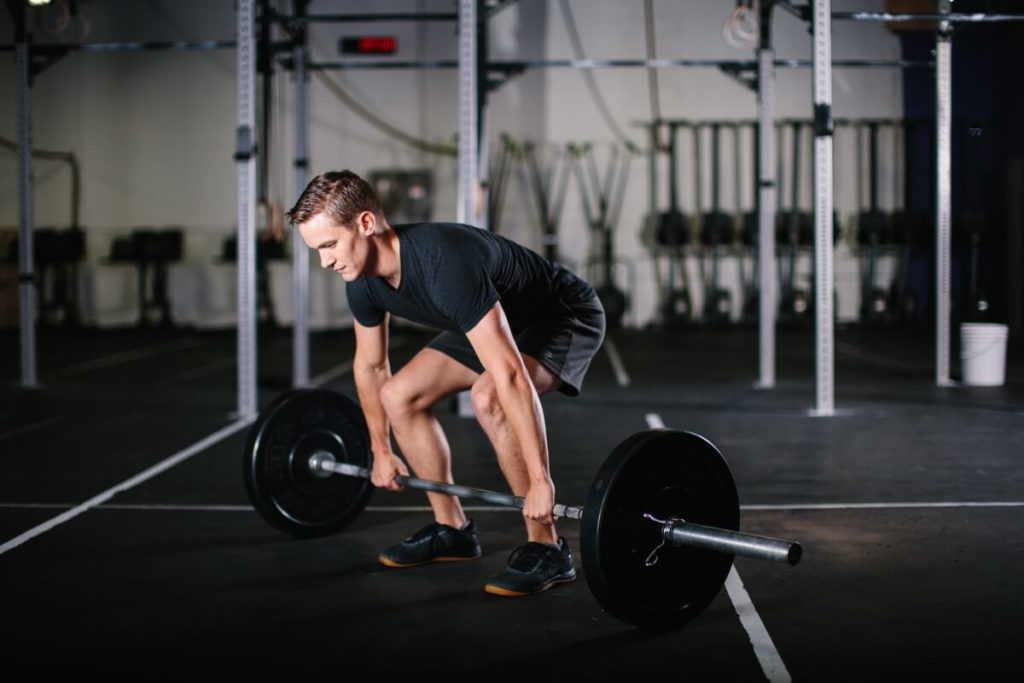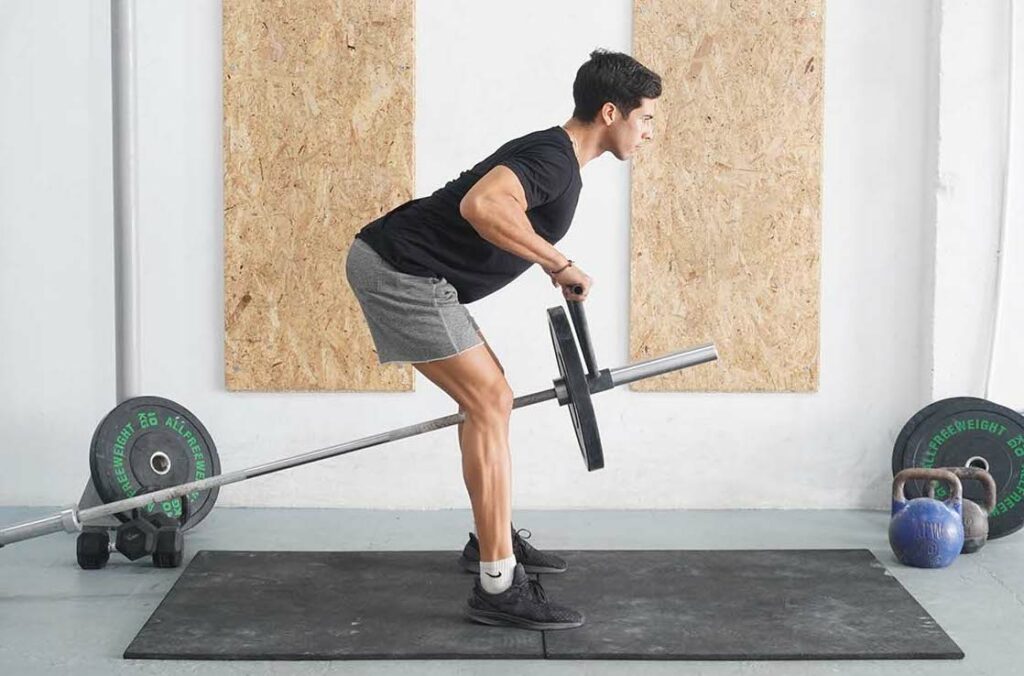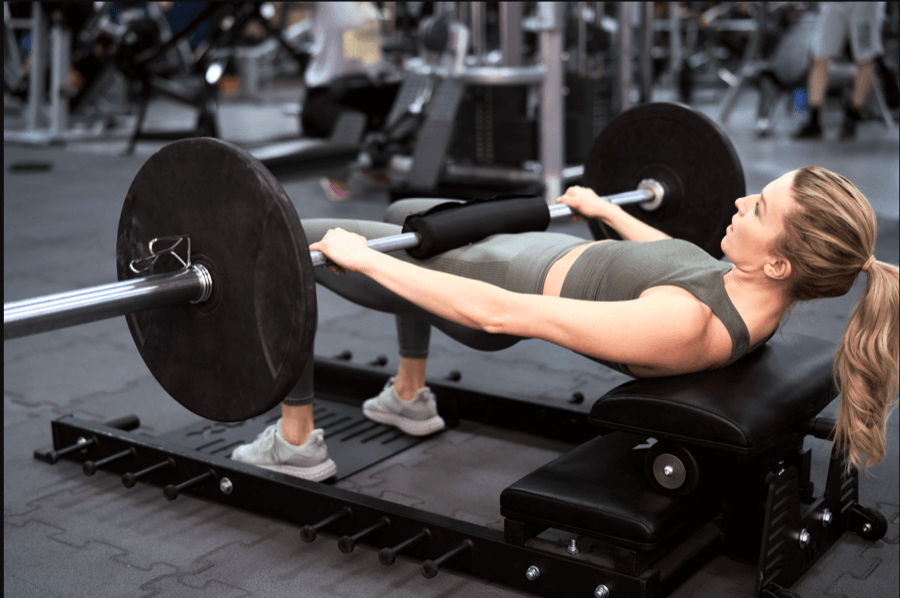The Benefits of the Sumo Deadlifts
Despite its somewhat mixed reputation in the training community, the sumo deadlift is an excellent full-body movement that builds strength, muscle mass, and athleticism. The objective is simple: grab a barbell and lift it off the floor. But, unlike the traditional deadlift, where your feet are a few inches apart, you have to assume a wide stance, hence the ‘sumo.’
A notable benefit of sumo deadlifts is that the movement trains a range of lower and upper body muscles. Another benefit is the excellent overloading potential in the form of adding weight to the bar as you get stronger. The third sumo deadlift benefit is the grip strength you develop from holding onto a heavy barbell. As such, many other gym exercises and everyday activities become more manageable.
We recommend including sumo deadlifts early in your training, preferably first or second. Once you’ve mastered the proper form, load more weight and train in the 4 to 8 repetition range.
Level of Exercise: Intermediate
How to do a Sumo Deadlift
- Load the barbell and set it on the floor.
- Stand in front of the bar with your feet spread wide and toes pointing out. Your shins should be close to the bar but not in contact.
- Bend forward and grab the barbell with a double overhand grip (palms facing back). Your hands should be shoulder-width apart, with your elbows a few inches from the insides of your knees.
- Bring your shoulders back and lift your chest. Doing so will straighten your back, place your hips at the correct height, and bring your shins against the barbell. Set yourself to the barbell, don’t bring the barbell to your body.
- With your body tense and arms straight, take a deep breath into your belly.
- Pull the barbell forcefully as you dig your heels into the floor.
- Extend your knees and hips as the barbell travels in a straight vertical line and close to your body.
- Squeeze your glutes at the top to complete the repetition but don’t hyperextend your back, as doing so places unnecessary stress on your spine.
- Hold the top position for a moment.
- Lower the barbell in a controlled manner, making sure it descends in the same vertical line close to your thighs, knees, and finally––shins.
- Set the barbell on the floor as you exhale.
- Retract your shoulder blades again, take another breath, and repeat.
What muscles does the sumo deadlift activate?
The primary muscle groups involved in the sumo deadlift are the hamstrings and glutes, which cover the back of your thighs and make up the buttocks region (1). Both muscle groups create the necessary force for hip extension, which occurs as you lift the barbell off the floor and straighten your body (2, 3).
Your quadriceps are the third major muscle group that works during sumo deadlifts (1). The muscle group covers the front of your thighs and produces knee extension (straightening of the leg) as you pull the barbell off the floor and move it up (4). Similarly, the adductors (inner thigh muscles) contribute to lower body stability and assist in lifting the weight (1).
Aside from the lower body musculature, sumo deadlifts train a range of upper body muscles. The most notable example is the back complex, which consists of several muscles, including the erector spinae, latissimus dorsi, rhomboids, and trapezius (1). These muscles flex isometrically to create a rigid torso position and keep your spine safe and neutral.
The entire midsection also flexes isometrically, contributing to torso rigidity, protecting your spine, and allowing you to exert maximum force to lift the loaded barbell off the floor.
Your shoulders, arms, and forearms play a crucial role in supporting the weight in your hands. These muscles play an isometric role during the deadlift, and holding the barbell would be impossible without them.
Progression into a Sumo Deadlift
Assuming a sumo stance for the deadlift comes easily for some people. If you struggle to get into the proper position for a sumo deadlift, you should start working on your hip mobility and adductor flexibility.
A dedicated hip mobility drill will open up the area, allowing you to more easily spread your feet for the sumo deadlift and get into the starting position. Good exercises you can do for hip mobility include leg swings, lying hip rotations, kneeling lunges, and the Cossack squat. We recommend doing some mobility work at least once per week and performing some bodyweight Cossack squats and leg swings before your deadlift session.
Similarly, stretching your adductors will open up the area more because you will increase these muscles’ lengthening ability. Good stretches include the frog stretch, standing wide-knee stretch, and seated adductor stretch.
As for the strength to do sumo deadlifts, you can use 10-pound bumper plates on a standard barbell. Doing so is beneficial for elevating the barbell to the correct height without having to train with 135 pounds. Perform the movement and gradually increase the load until you can lift 135 pounds safely. From there, you can switch to metal or rubber-coated plates.
Variations and Modifications of the Sumo Deadlift
1. Conventional Deadlift

As briefly mentioned above, the conventional deadlift variation is where your feet are spaced a few inches apart. As a result, your elbows are to the outsides of your knees. Conventional deadlifts appear to cause slightly greater back activation, whereas sumo deadlifts seem advantageous for training the quadriceps more effectively (1).
2. Sumo Pause Deadlift
The sumo pause deadlift is an incredibly challenging variation that develops your strength from the bottom. Instead of lifting the bar in one uninterrupted motion, you have to raise the barbell a couple of inches off the floor, pause for a second or two, and complete the repetition.
3. Resistance Band Sumo Deadlift
Resistance band sumo deadlifts are beneficial for those training at home with no access to a barbell. The objective is to take a long looped band, step over both ends, grab the middle, and perform sumo deadlifts as you would with a straight bar.
Mistakes to Avoid
Not Bringing Your Knees Out
A common mistake with the sumo deadlift, particularly among people used to the conventional lift, is keeping the knees pointing forward. Doing so limits your ability to get into the correct position and can lead to hip pain. Avoid the error by spreading your feet as wide as your mobility allows and bringing your toes out. Doing so will rotate your legs and cause your knees to point in the right direction, leading to safer and stronger deadlifts.
Not Gripping The Bar Correctly
Another error with the sumo deadlift is placing your hands too close or far from one another. A wider grip forces your torso to become more horizontal, making it more challenging to get into the correct position. In contrast, a narrow grip can make it challenging to support the barbell and keep it balanced during each set. Avoid the error by bringing your arms straight down as you set yourself up.
Hyperextending at the Top
The third common error with the deadlift is pulling the barbell to the top and hyperextending your back as you complete the rep. Doing so offers no benefits and only places stress on your spine. Avoid the mistake by lifting the bar in a straight line, extending your hips fully, and holding that position for a second before lowering the barbell.
Similar Exercises to the Sumo Deadlift
T Bar Row

T bar rows are a fantastic movement that strengthens a range of major muscles in the body. Like sumo deadlifts, the T bar row develops your entire back, midsection, and arms. The objective is to bend forward over a T bar station, grab the weight, and repeatedly pull it to your mid-torso.
Hip Thrust

Hip thrusts are among the most effective compound exercises for the posterior chain: hamstrings, glutes, and lower back (5). The objective is to position your upper back against a flat gym bench and place a loaded barbell over the crease of your hips. Once in position, engage your posterior muscles to extend your hips and lift the barbell to the ceiling.
Reverse Hyperextension
Reverse hyperextensions aren’t as popular as rows, hip thrusts, and deadlifts, but the movement develops your posterior chain effectively (6). The objective is to position yourself over a reverse hyperextension machine and straighten your legs. Engage your posterior muscles to raise your legs and align them with your torso. You then have to lower your legs slowly before lifting them again, doing as many repetitions as possible.

